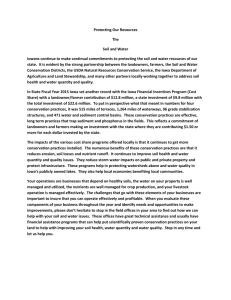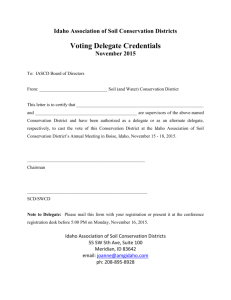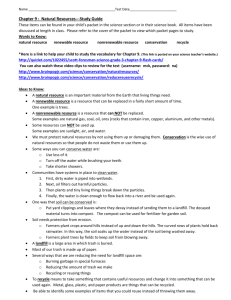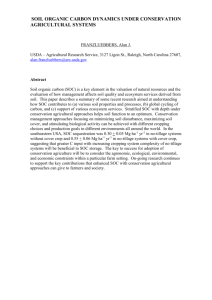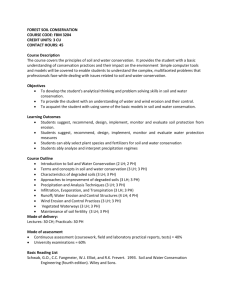Principles of conservation agriculture
advertisement
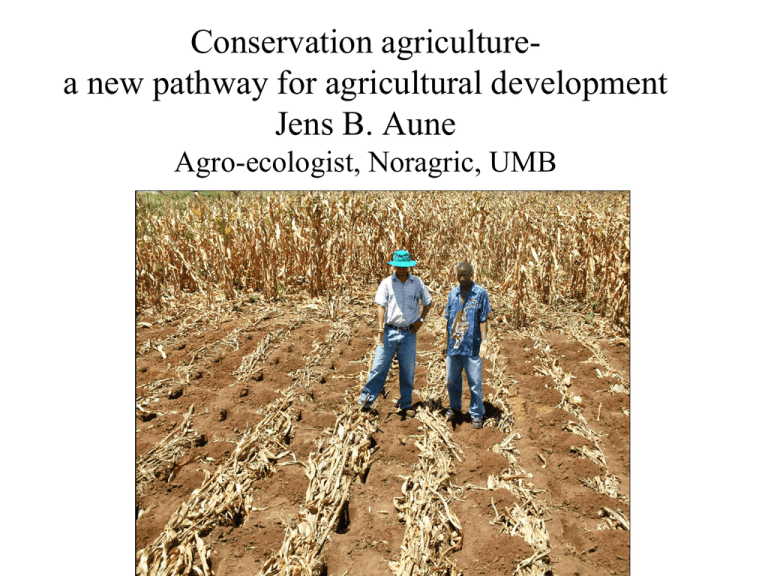
Conservation agriculturea new pathway for agricultural development Jens B. Aune Agro-ecologist, Noragric, UMB Disadvantage of the system • • • • • • Low yields because sowing is delayed Low soil organic matter content High soil erosion Inputs are not efficiently utilized Most of the fodder resources are used by oxen Female households are in particular vulnerable situation because the man who ploughs takes up to 50% of the harvest Principles of conservation agriculture • Direct sowing • Soil cover (mulch) • Crop rotations Improved soil fertility management is often a requirement Advantages of cons. agr. • Resembles a natural eco-systemsoil is continuously covered • Build soil organic carbon • Less soil erosion • No turning of the soil- less use of energy (30-40 % less use of energy) • Yields comparable to conventional agriculture • Less need to keep oxen Forms of conservation agriculture Planting basins Photo: Progress Nyanga Ripping Photo:CFU Zambia Tractor ripping – dry season ripping Photo:CFU Zambia Millet biomass yield (kg ha-1) Fertiliser and mulching (millet straw) No input Lessons from the Sahel drought in the 1980s. Millet production in Niger (Bationo and Buerkert 2001) Conservation agriculture in the Horn of Africa i • Conservation agriculture should be more actively promoted in the Horn of Africa • Agriculture becomes more resistant to climate change • Improvements in livestock production • Positive environmental effects Conservation agriculture in a global context • The only agricultural system that can feed 9 billion people in a sustainable way. • Should also be more promoted under temperate agricultural conditions like in Norway • International and Norwegian research (Apelsvoll) tell that conservation agriculture has less GHG and nitrogen emission per kg produced food than organic and conventional agriculture. There is a need for a stronger policy push of conservation agriculture internationally as well as domestically.




